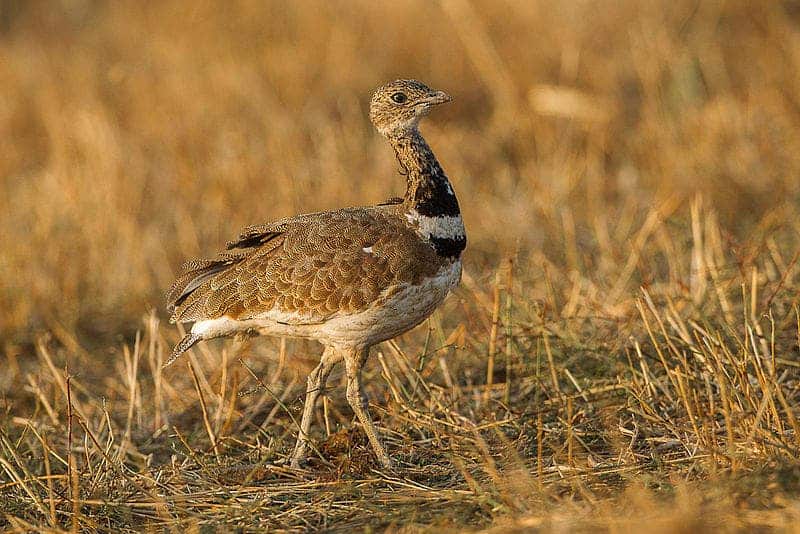Global warming is going to make everything hotter — except birds’ dating lives, new research shows.

A new study published by researchers at the University of East Anglia (UEA) and the University of Porto (CIBIO-InBIO) reports that global warming could reduce the mating activity and success of grassland birds.
Hot singles in your area
“This work has shown how global warming may affect important behavioral mechanisms using the mating system of a lekking grassland bird species as an example,” says Mishal Gudka, who led the research while at UEA’s School of Biological Sciences.
The study examined the little bustard (Tetrax tetrax), a species of grassland bird that’s classified as a vulnerable species in Europe. The aim of the study was to see how rising mean temperatures could affect the future behavior of this (as well as other related) species.
Male little bustards, like male humans, spend most of their time in April and May trying to attract females. They do so in gatherings known as leks. They will bunch up together in a lek and stand upright, letting out a bellowing call to get noticed by prospective mates. Such calls are also employed to scare off competing males from their territory.
The team, with members from the UK, Kenya, Portugal, Spain, and Brazil report that high temperatures reduced this call display behavior among males. Their hypothesis is that if conditions get too hot, the birds have to make a choice between attempting to mate or finding shelter to protect themselves from the heat and save energy.
The team used remote GPS/GSM accelerometer tracking devices that were fitted to 17 wild male little bustards living at five sites in Spain and Portugal. The birds were filmed while the accelerometers recorded their position to record their behavior. Using this data, the team was able to determine the acceleration signature or pattern for snort-calling behavior, which they then tracked for the present study.
Little bustard display behavior is significantly related to temperature and to the particular stage of the mating season reached, the team reports. The average temperature of each day has been inversely linked to how much display behavior the males put out: the higher the temperature, the lower display rates become. The study focused on a region of the Iberian Peninsula (Spain and Portugal) where average daily daytime (5:00—21:00 hours) temperatures varied between 10ºC and 31ºC. Snort-call display probability decreased substantially as temperature increased from 4 to 20ºC, stabilized from 20 to 30ºC, and decreased thereafter.
The team reports that, based on these findings and temperature projections in the area, the average display activity of the birds will drop by 10% by 2100.
“Many people are familiar with the impacts of global warming on wildlife through droughts, storms or wildfires as well as earlier migration with warming springs,” says co-author Paul Dolman, Professor of Conservation Ecology at UEA’s School of Environmental Sciences. “But climate change affects species in many other subtle ways that may cause unexpected changes.”
“Little bustards living in the Iberian Peninsula are already exposed to some of the highest temperatures within their species range. They are one of many bird and mammal species that have an extravagant, energetically demanding display ritual, meaning they are all susceptible to the same issue.”
The paper “Elevated temperature affects male display activity of a lekking grassland bird” has been published in the journal PLOS ONE.


